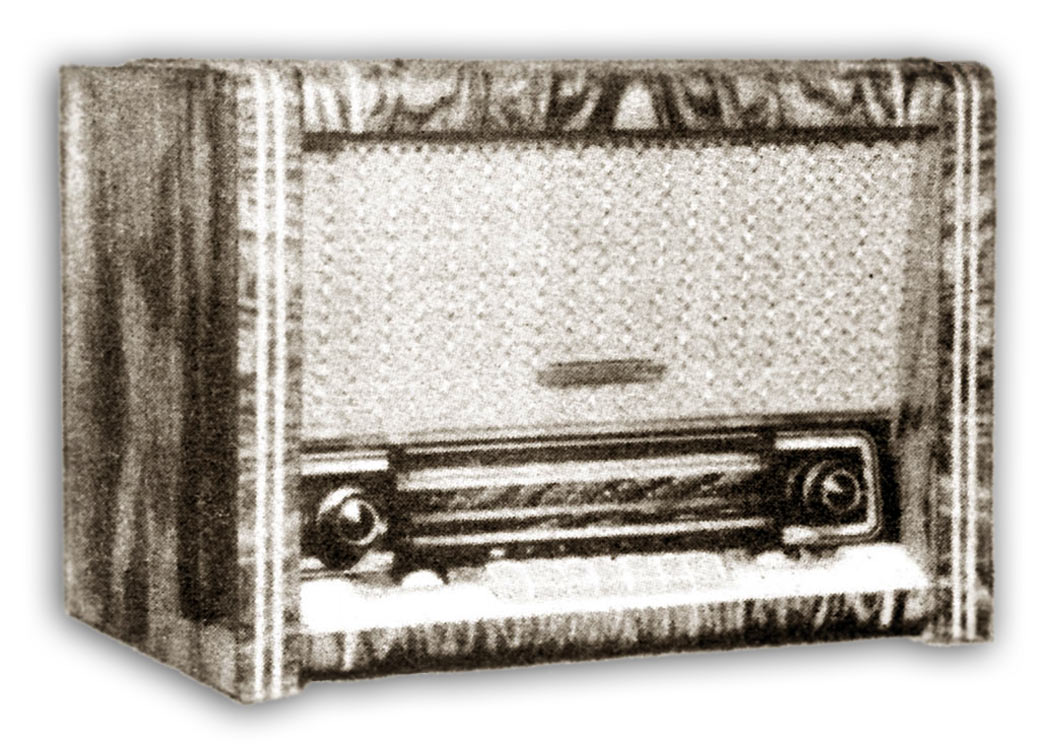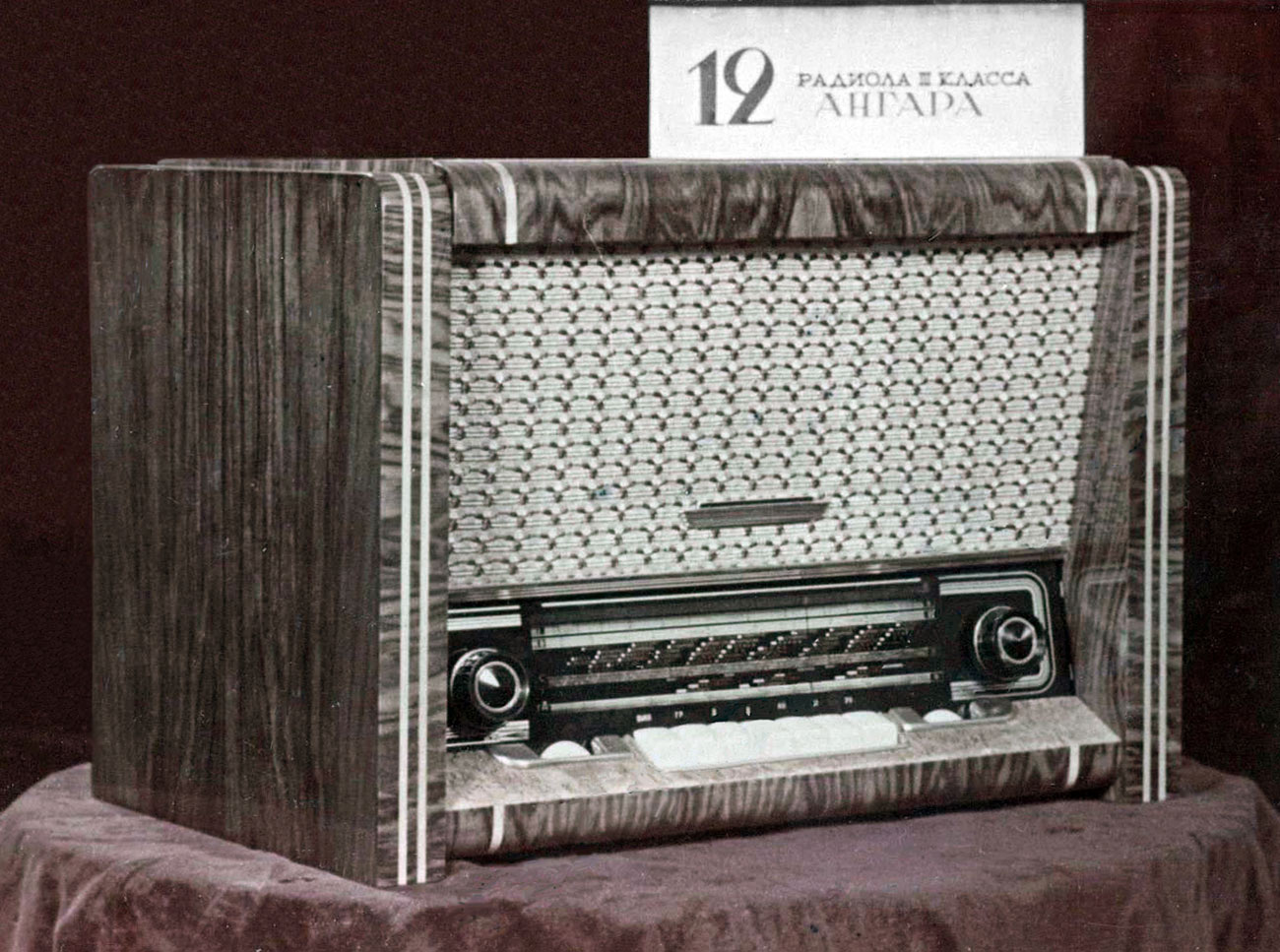Radiola network lamp "Angara".
Network tube radiosDomesticRadiola network lamp "Angara" in 1955 was developed by the Riga State Electrotechnical Plant VEF. By the beginning of 1956, the VEF plant had developed a number of receivers and radiograms based on finger lamps of various designs and parameters. Some of the units and chassis of the vehicles were unified. All devices had a rocker switch, a rotatable internal magnetic antenna and an internal dipole, if the VHF range is provided. Class III receivers and radios have 2 speakers each, Class II and higher - four. The names of the new devices are represented by precious stones: Almaz, Amethyst, Aquamarine, Crystal, Ruby, Sapphire, Topaz, Amber. There was a river series: Amur, Angara, Terek, Dvina and a musical series: Concert, Melody, Symphony and others. Some samples were transferred for production to other factories of the USSR, some were manufactured by an experimental batch. In the newspaper of the Vefietis plant (VEFovets) at the end of 1955, it was reported that the task of the Ministry of Radio Engineering Industry of the USSR on the development of 15 models of radio equipment and the manufacture of their prototypes by the designers and production workers of the VEF was fulfilled. The developed devices were demonstrated at the World Exhibition in Brussels in 1958 and were awarded with prizes. Many developments were shown at the New York exhibition in 1959. Radiola of the third class "Angara" was a prototype made in a single copy.
